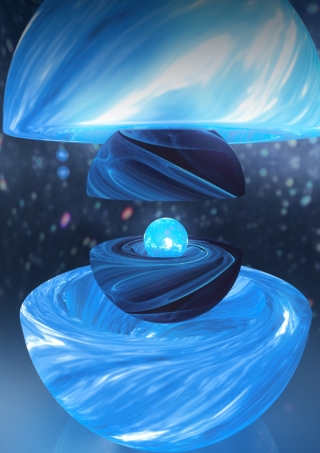If parts of the neutron star interior start to move outwards, the star spins faster. This is called a “glitch,” and it’s providing astronomers with a brief insight into what lies within these mysterious objects.
In a paper published August 12 in the journal Nature Astronomy, a team from Monash University in Melbourne, the Australian Research Council’s Centre of Excellence for Gravitational Wave Discovery (OzGrav), McGill and the University of Tasmania, studied a neutron star known as the Vela Pulsar. Located in the southern sky, and approximately 1,000 light years from Earth, the Vela Pulsar is known to glitch about once every three years. Only five percent of pulsars glitch, so the Vela Pulsar’s regularity has made it a favourite of glitch hunters.
 By reanalyzing data from the 2016 Vela glitch, taken by co-author Jim Palfreyman from the University of Tasmania, the team found that the glitching star started spinning faster than previously observed, before relaxing down to a final state.
By reanalyzing data from the 2016 Vela glitch, taken by co-author Jim Palfreyman from the University of Tasmania, the team found that the glitching star started spinning faster than previously observed, before relaxing down to a final state.
According to Paul Lasky from Monash University, this observation gives scientists the first-ever detailed glimpse into the interior of the star – revealing that the inside actually has three different components.
“One of these components, a soup of superfluid neutrons in the inner layer of the crust, moves outwards first and hits the rigid outer crust of the star, causing it to spin up,” says Lasky. “But then, a second soup of superfluid that moves in the core catches up to the first, causing the spin of the star to slow back down.”
This overshoot has been predicted by researchers — including study co-author Vanessa Graber from McGill, who visited the Monash team as an OzGrav International Visitor at the end of last year – but had never been observed until now.
One glitching mystery, however, has led to another. “Immediately before the glitch, we noticed that the star seems to slow down its rotation rate before spinning back up,” says the study’s first author, Greg Ashton from the Monash School of Physics and Astronomy. “We actually have no idea why this is, and it’s the first time it’s ever been seen! We speculate it’s related to the cause of the glitch, but we’re honestly not sure,” he said adding that he suspects this new paper to spur some new theories on neutron stars and glitches.
